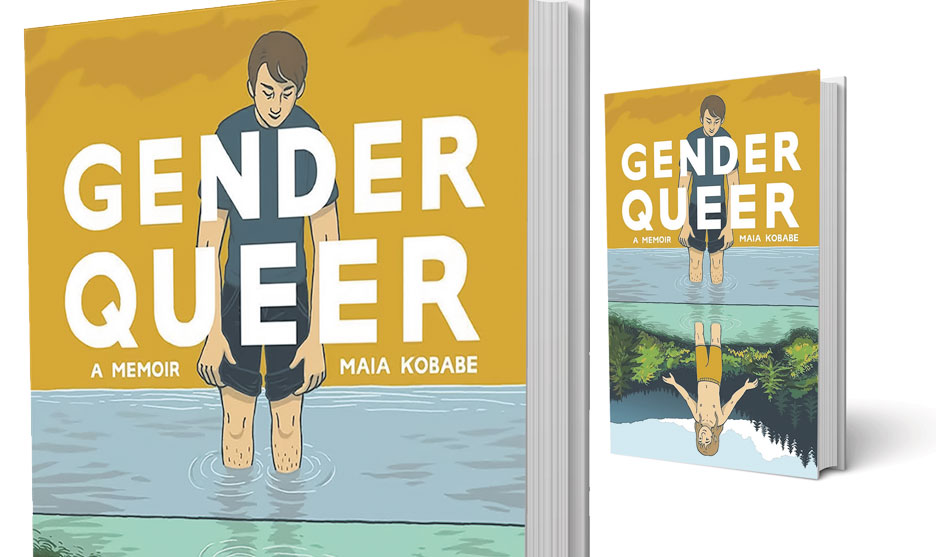Books featuring LGBTQ youth, people of color are most often targets for those banning books
 This week marks Banned Books Week, the American Library Association’s annual celebration of the freedom to read. But this year feels more like a call to action than a celebration. Book bans and other attempts at censorship, largely targeting the LGBTQ and other marginalized communities, are raging across the country.
This week marks Banned Books Week, the American Library Association’s annual celebration of the freedom to read. But this year feels more like a call to action than a celebration. Book bans and other attempts at censorship, largely targeting the LGBTQ and other marginalized communities, are raging across the country.
Between Jan. 1 and Aug. 31 this year, the ALA documented 681 attempts to ban or restrict a total of 1,651 unique titles — already superseding 2021’s 1,597 titles and on track to pass its 729 attempts, the highest number since ALA began tracking the numbers more than 20 years ago. Additionally, more than 70 percent of the attempts in 2022 involve multiple titles; previously, the vast majority only sought to remove or restrict a single book.
LGBTQ content is among the most frequently challenged. The ALA’s latest list of the Top 10 Most Challenged Books includes five books targeted for “LGBTQ+ content,” including the number one book, Gender Queer by Maia Kobabe, a memoir about growing up nonbinary and asexual.
Six of the Top 10 books also had protagonists of color.
“The unprecedented number of challenges we’re seeing already this year reflects coordinated, national efforts to silence marginalized or historically underrepresented voices and deprive all of us — young people, in particular — of the chance to explore a world beyond the confines of personal experience,” said ALA President Lessa Kanani’opua Pelayo-Lozada.
A similar study by PEN America, from July 2021 to June 2022, found 2,532 book bans and restrictions — 40 percent including people of color as protagonists or prominent secondary characters; 21 percent directly addressing race and racism; and 41 percent explicitly addressing LGBTQ themes or having LGBTQ protagonists or prominent secondary characters.
Texas had the most bans (801), followed by Florida (566) and Pennsylvania (457). But bans have occurred in a total of 32 states and 138 school districts.
These censorship efforts are taking place alongside nationwide legislative attacks on LGBTQ youth. Three bills censoring LGBTQ content in schools were signed into law in 2022 — in Florida, Alabama and South Dakota, according to HRC. More than 70 other discriminatory education bills have been introduced across the country aimed at preventing classroom discussion of LGBTQ or other marginalized people and issues. These include Florida’s “Stop WOKE Act” signed into law by Gov. Ron DeSantis. Additionally, more than 100 bills this year have targeted transgender youth via bans on affirming health care, bathroom access, sports participation and more.
The same national conservative organizations are behind many of these legislative and book banning efforts, according to GLAAD. If we look at the books being targeted — which include picture books that simply show LGBTQ people and families in everyday situations — it’s clear that the goal is not just to block young adult books like Gender Queer that mention sex and sexuality; it’s also to censor any depiction, however innocuous, of LGBTQ lives.
This is nothing new; Lesléa Newman’s 1989 picture book Heather Has Two Mommies has faced challenges since shortly after its publication.
Coupled with the broader legislative attacks against LGBTQ youth, however, today’s challenges form part of an ominous threat both to First Amendment rights and to LGBTQ children, youth and families.
There are signs of hope, however. Just two examples: In Texas, the Austin City Council unanimously adopted a resolution earlier this month promoting the ALA’s Freedom to Read Statement, opposing book bans and supporting the Austin Public Library’s materials-selection policy. And after some community members in Jamestown, Mich., voted to defund the public library over LGBTQ books on its shelves, others launched a GoFundMe campaign that has raised more than $260,000 for the library.
Students, parents, librarians and other community members are also speaking out against bans and challenges elsewhere, sometimes with success. Organizations like the ALA, ACLU, EveryLibrary, GLAAD, National Coalition Against Censorship, FReadom Fighters, Red Wine & Blue and others are also taking action and providing resources to fight censorship.
Additionally, LGBTQ-inclusive children’s books continue to be published in record numbers, and people are finding innovative ways to connect children with these and other diverse books.
How can we help address and prevent book bans and other forms of censorship? Start by reporting censorship attempts to the ALA (ala.org) and/or to NCAC (ncac.org). Then visit Unite Against Book Bans (uniteagainstbookbans.org), for talking points, more suggested actions and more resources.
Dana Rudolph is the founder and publisher of Mombian (mombian.com), a GLAAD Media Award-winning blog and resource directory, with a searchable database of 1000+ LGBTQ family books, music, and more.













